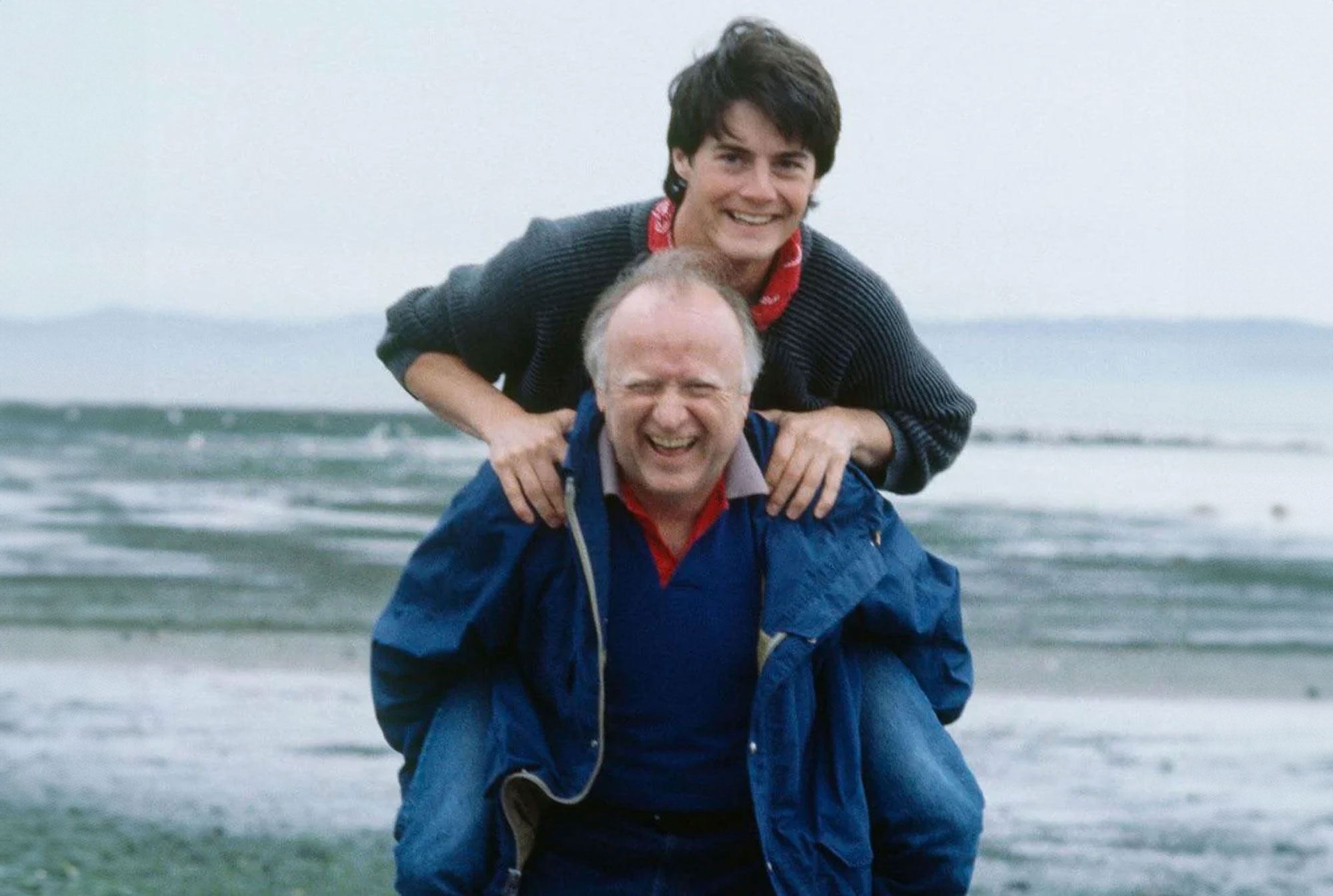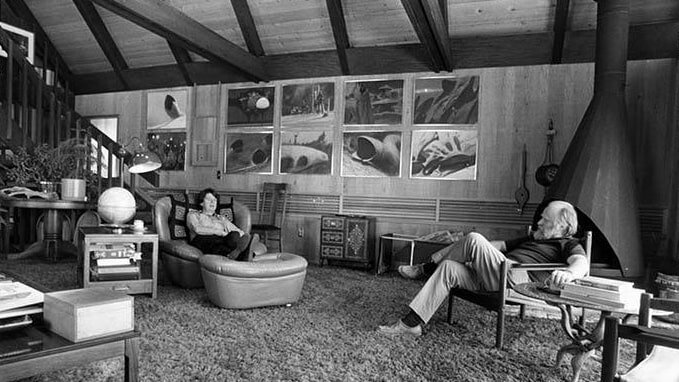

If you’re looking for a way to connect your alma mater to Timothée Chalamet, look no further. The star graced screens around the world in the epic films “Dune” and “Dune: Part Two,” which were based on the Hugo Award-winning science fiction novel by former UW student Frank Herbert. Need another tie? Chalamet’s character, Paul Atreides, first appeared on the silver screen in the 1984 version of “Dune.” The actor? Kyle MacLachlan, ’82.
But maybe you’re a Dune fan (or a “spice” girl?) and you already knew those things. If so, here are a few more behind-the-scenes details about the 1965 novel, its author and the role the UW played in the “Duniverse.”
Herbert was born in Tacoma in 1920. As a child, he is said to have stood on his kitchen table and declared to his family he would someday be a writer. In 1938, in the wake of family difficulties, he moved with his younger sister to the home of an aunt and uncle in Salem, Ore., where he finished high school.
He wrote for newspapers in Oregon and California before serving as a photographer in the Naval Reserve during World War II. While Herbert never graduated college, he attended the University of Washington on the G.I. Bill from 1945-1947. He met his future wife, Beverly Ann Stuart, in a creative writing class.
Years later, when it came time to release “Dune” in book form, Herbert was rejected by nearly 20 publishers. Eventually, the sci-fi masterpiece was picked up by Chilton Company, a publisher better known for automotive manuals, and went on to sell more than 12 million copies.
Before Herbert returned to the UW in the early 1970s as a visiting professor, he covered education for the Seattle Post-Intellegencer. Living on Mercer Island, he continued writing novels and further developed the “Dune” saga. He died in 1986 at age 65.
Perhaps one of the reasons Herbert and Beverly were drawn to each other was their early success in writing; no one else in their UW writing class was published at the time. According to the biography of Herbert, “Dreamer of Dune,” by his son Brian Herbert, “Frank had sold two pulp adventure stories to magazines… Beverly sold a story to ‘Modern Romance’ magazine. These genres reflected the interests of the two young lovers; he the adventurer, the strong, machismo man, and she the romantic, exceedingly feminine and soft-spoken.”
Beverly gave up her creative writing career to become the family breadwinner, writing ad copy for department stores. This allowed Herbert to focus on his novels, though he often turned to her for writing advice and editing.
Beverly died in 1984 at the age of 57. Herbert wrote a three-page tribute to her in the final book of the six-part “Dune” series, “Chapterhouse: Dune.”

Beverly and Frank Herbert in their Port Townsend Home. Photo courtesy of Brian Herbert.
Herbert found inspiration for Arakkis, the desert planet otherwise known as “Dune,” in the sand dunes on the Oregon coastline. He once researched (but never finished) an article about a U.S. Forest Service project to control the movement of Oregon’s sand dunes and protect houses, roadways and farms.
Tacoma, too, plays a major role in “Dune.” According to his biography: “[Herbert] was a daily witness to conditions in Tacoma, which in the 1950s was known as one of the nation’s most polluted cities.” A huge lead and copper smelter smokestack on the waterfront vented toxic plumes into the sky. “The increasing pollution he saw all around him, in the city of his birth, contributed to his resolve that something had to be done to save the Earth,” writes Brian Herbert. “This became, perhaps, the most important message of ‘Dune.’”
Today, visitors can walk through Dune Peninsula Park at Point Defiance in Tacoma. After 400,000 cubic yards of contaminated soil from the smelter was capped, the former EPA Superfund site opened to the public as a “Dune”-themed park in 2019. There’s even a trail featuring signs with quotes from the book and bronze sculptures of the sandworms of Herbert’s imagination.

Image courtesy of Metro Parks Tacoma
Director Denis Villeneuve first read “Dune” when he was 13 and immediately began storyboarding. Adapting the novel to the screen has been his dream ever since. He even waited to begin the filmmaking process until he had the experience of making science fiction movies with “Blade Runner: 2049” and “Arrival.”
Though he appreciated David Lynch as a filmmaker, Villeneuve has said he isn’t a fan of Lynch’s 1984 adaptation of “Dune.” In fact, many filmmakers believed the novel—one of the best-selling science fiction books of all time—was unadaptable. Surrealist filmmaker Alejandro Jodorowsky made an attempt in the 1970s that stalled in production. Another effort with director Ridley Scott ended after problems with script and budget. Even Lynch describes his 1984 version as compromised by the studio, refusing to talk about it in interviews and removing his name from the credits.
David Lynch’s “Dune” marked the feature film debut of Kyle MacLachlan, ’82. (Technically, he was an extra in 1980’s “The Changeling,” which was filmed on UW’s campus. But that wasn’t a talking part.) He was scouted for the lead role of Paul Atreides by a casting agent who saw him perform in the play “Tartuffe” at the UW.
It was also the beginning of MacLachlan’s long partnership with Lynch. His leading roles in Lynch’s “Blue Velvet” and “Twin Peaks” are widely celebrated. Eagle-eyed viewers of “Dune: Part Two” will notice a nod to MacLachlan and “Blue Velvet” near the end of the film, where ants crawl into the ear of a dead body.
We’ll never know what Frank Herbert would think of Villeneuve’s “Dune” and “Dune: Part Two.” But so far, the movies adhere to the books, especially in their representation of Fremen as people who take care of their lands and are apprehensive of outsiders.
MacLachlan told news reporters that he appreciated Timothée Chalamet’s take on Paul Atreides. And when asked if he’d appear in a future “Dune” movie, the seasoned actor might consider it. “I watched his film, it was great, I enjoyed it,’” he told ComicBook.com. “I had a tremendous sense of nostalgia, to be honest, watching some of the sequences and remembering stuff that I did with our cast in 1983.”
“I think it’s totally up to Denis Villeneuve and whatever he wants to do,” he said of a potential cameo role. “Who knows?”
Let’s hope we see a Husky in “Dune Messiah.”